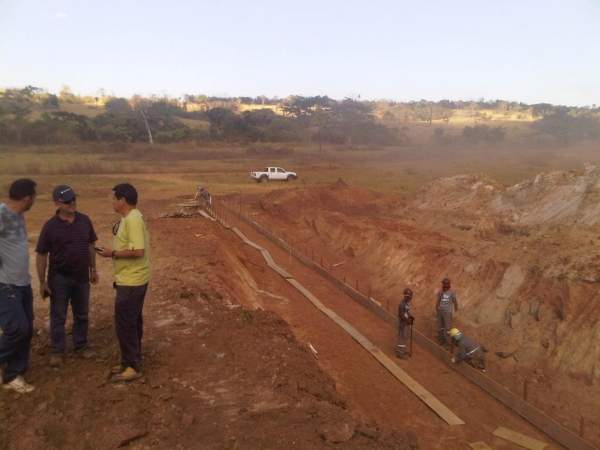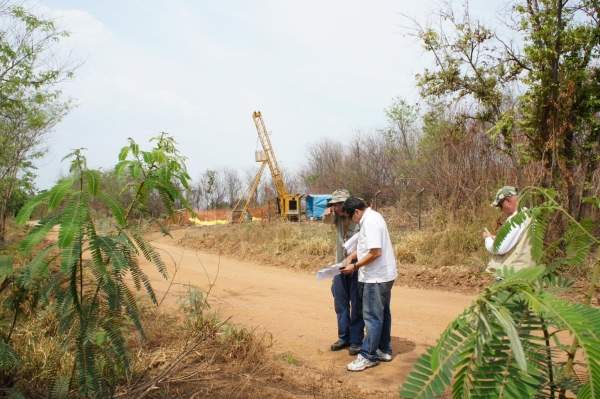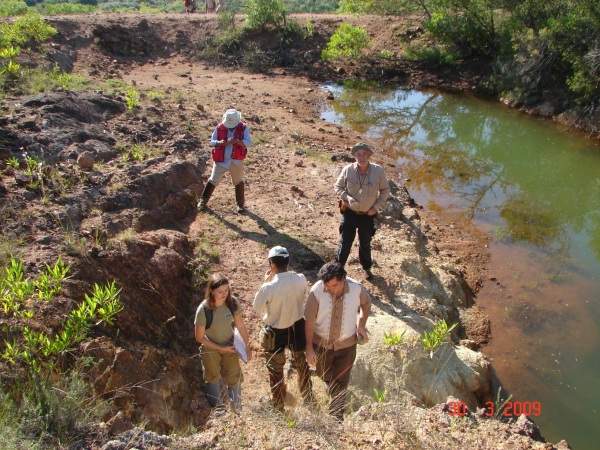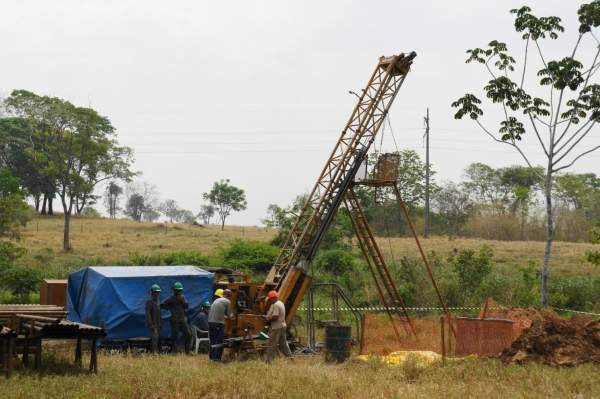The Mara Rosa Project is a gold mine located in the Mara Rosa village, in the state of Goiás in Brazil. It includes 60,000ha of exploration permits and 2,600ha of mining permits. Through its wholly owned subsidiary Metallica Brasil, Amarillo Gold Corporation owns and operates the mine.
The Posse deposit was discovered in 1982 by BHP Billiton and has been acquired by several companies, before Amarillo finally acquired it in October 2003.
The main mineral deposit within the mine is the Posse deposit, which includes two pits, Posse North and Posse South, developed by previous owners.
Amarillo is developing the project as an open-pit operation with an annual production rate of 2.5Mt for the first seven years of operation. A pre-feasibility study (PFS) carried out by Coffey Mining International was completed in November 2011. Results of the PFS have shown that the mine is viable as an open-pit operation.
A feasibility study is being conducted based on the results of the PFS. Several aspects of the feasibility study, including geotechnical and metallurgical studies, groundwater studies and environmental works, have already commenced.
In May 2012, Amarillo submitted an application for a preliminary license for conducting mining operations at the project, but the Ministério Público (MP) requested a review of the impact of the historic mining operations at the Posse Deposit. The judicial review cleared the project to continue with the licensing process, in November 2015.
The project will produce gold bars containing 95% of gold.
Geology and reserves of Amarillo’s gold project
The Mara Rosa prospect lies within the Goiás Magmatic Arc (GMA), which is a 100km-wide north-east-trending, granite-greenstone terrane.
It is made of middle to neo-proterozoic age volcano-sedimentary deposits. Most of the gold accumulation is found in the eastern belt of the GMA which contains well-developed, penetrative foliation dipping in a north-west direction.
As of January 2012, proven and probable reserves are estimated at 17.1mt grading at 1.72g/t of Au. Measured and indicated resources are 20.8Mt, grading at 1.75g/t of Au. Inferred resources are 3.6Mt, grading at 1.34g/t of Au.
Mineralisation of the Goiás-based deposits
Gold mineralisation in the Posse deposit occurs in two main lithological units. These units include fine-grained gneiss, which form the hanging wall of the deposit, and quartz-mica schist, which form the host and footwall of the deposit.
The mineralisation has a thickness ranging from 30m to75m and a depth of 400m. It is characterised by silicification, sericitisation, K-feldspar flooding and pyritisation. Gold is found in the form of between ten and 100 micron-sized grains, along with pyrite and frohbergite.
Mining and processing at the Brazilian mine
Mara Rosa was operated by BHPBilliton from 1982 to 1987. During this period, BHP carried out 12,300m of diamond and reverse circulation drilling. BHP developed a small open pit mine operation with the two pits, Posse South and Posse North.
Ownership of the mine later shifted to the Western Mining Corporation (WMC) which operated the mine from 1988 to 1995. WMC recovered 80,000oz of gold from the mine during this period. In 2002, Metallica Brasil became the owner of the mine. Metallica conducted small-scale drilling and geophysical studies before being acquired by Amarillo.
After the acquisition of the mine, Amarillo carried out 33,000m of drilling. The PFS has recommended an open-pit operation along with a carbon-in-leach (CIL) plant to process the recovered ore.
Hydraulic excavators and haul trucks will be used to recover ore from the mine. Haul trucks will carry the recovered ore to the run of mine stockpile area. From here, the ore will be discharged into a feed hopper and then to the CIL plant.
Ore processing at Mara Rosa
The CIL plant includes two 4MW primary and secondary mills for grinding the ore to the size of 45μm. Lime is added to the primary mill to form a pulp. This pulp is then divided among three equal-sized agitated vessels and treated with oxygen for about 12 hours.
Following oxidation, the pulp is sent to the CIL circuit where it undergoes a six-stage cyanidation process for 24 hours. Cyanidation includes the addition of cyanide and activated carbon to the pulp which dissolves and adsorbs the gold. A Zadra-type elution circuit is used to extract the gold.







